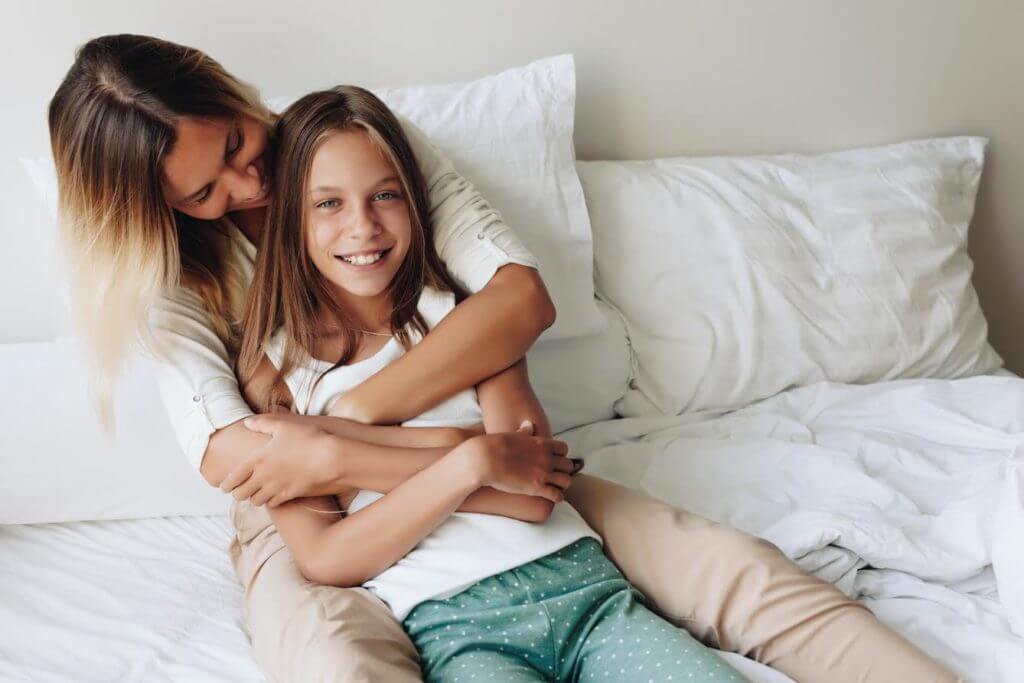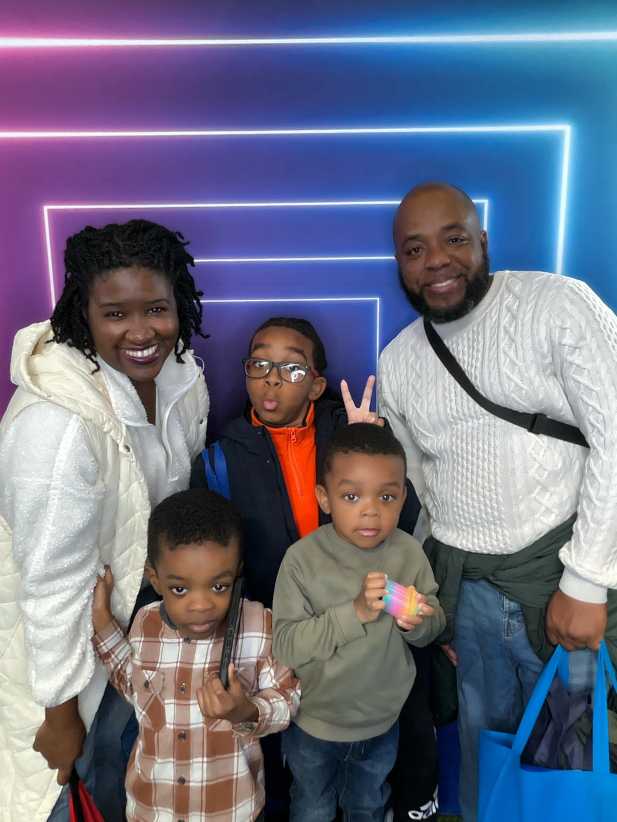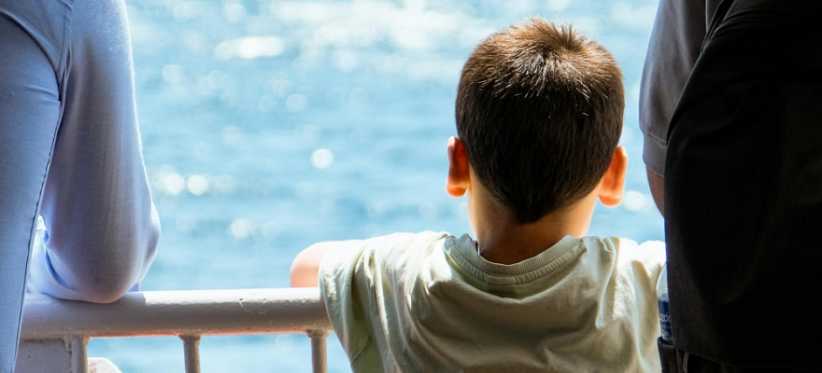
I literally don’t remember talking to my mom about bodies or sex. I think it’s because it wasn’t a single sit-down conversation. Instead, the conversation as woven into the many years of my young life. We had a pretty open home. It was just my mom and me and we had no issues around bodies and didn’t hide ourselves. I watched her shave her legs in the shower. I knew where the tampons and pads were. I knew my mom had a couple of boyfriends over the years. I even accidentally landed on one of them once in my mom’s bed as I sailed through the air during a storm. I woke during a particularly loud and scary clap of thunder and with a running start, I jumped from her doorway so that there would be enough breadth between my jumping point and my mom’s bed. This way, the murderous thunder creatures hiding underneath her bed couldn’t grab my ankles. I think we all almost died of fright that night.
I do, however, remember taking sex-ed at school and wondering why this was happening. I grew up in a conservative state in the southwest so sex education was more about teaching the girls and boys separately about bodies and periods and, at least in my class, how girls could still go to ballet and go to school even if we felt crampy. The girls were taken into a separate room and we all plunked down on the brown thinly carpeted floor to watch the clunky tube tv that sat on a tall tower so no one would just be looking at the back of someone else’s head. I remember a ballerina and a swimmer on the video. I remember their shame and embarrassment as they discovered with quiet, awkward horror that they too hadn’t escaped from the fate of most women. They were bleeding from their vaginas. And it was HORRIBLE. We learned about how to discretely tell the school nurse or our mothers when we had cramps. We learned that we couldn’t use tampons until we were older because it would hurt our hymens. We were taught discretionary techniques like how to sneak a pad into a bathroom tucked into the long sleeve of our shirt or how to bury that barbie bed deep in our shallow pockets that were only good for holding a sticker or a single house key. At all costs, we were not to make the boys in our lives uncomfortable about our bodies.
And then, of course, we learned about cis-gendered bodies and heteronormative, missionary, penetrative sex that led to pregnancy.
Flash forward! Here we are. Parents ourselves. Liberated! Inclusive! Appalled by the talks we had with our parents and the education we received in school. We have come so far! And then your 6-year-old starts asking questions about how babies get in bellies, your 4-year-old notices that their sister doesn’t have a penis and they both want to know what tampons are for and where they disappear to when you’re sitting on the toilet. Ugh. While we thought “the talk” might happen with a broody tween, the conversation actually starts WAY before you were ready for it. In fact, it really starts as soon as you start talking with your infant.
I often get asked about what’s normal, what’s too much, when is it too early or too late. The answer is, it’s different for everyone. I propose that we move away from “the talk” being delivered as a singular and rattling conversation and that we move towards delivering information organically, as it comes up. Like weaving little threads of awareness into the fabric of their young lives.
Below I offer a few tips and tricks on how to integrate some of the foundations about human bodies, how they work, their relationships to themselves, responsibilities that come with the bodies they have and sexuality into the home.
- I think the quickest and easiest start is to meet your kids wherever they are. A great gauge is to just let your kids lead. Then take it from there. Pace yourself. Consider asking your kids about why they are asking a question without judgment and what they want to know before you start rattling off the facts.
- Please use the correct names for genitalia. The reason that we cringe at the word penis or vulva is probably Pavlovian. Chances are we were taught to whisper those words at home, we were told to call them something cuter. Who-ha, wee wee, etc. And most kids were, and still are, punished for using those words at school. This is damaging to how we relate with the bodies we have and the ones that the people we interact with. In fact, most adults don’t even actually know where the vagina is. Spoiler alert – it’s the orifice in the middle of the vulva that’s protected by the labia. Nor can most adults name the various, and important, parts of a vulva. If this is you, no shade, you are far from alone and also, Google! Consider using the correct terms in your home with your kids. Plain-faced. With the same tone as you would if you were talking about an eyeball or a knee.
- Secondly, if you have a household with a person who menstruates, or even if you don’t but just have friends who might, consider owning and not hiding supportive period products from anyone. Tampons, pads, cups, period underwear, etc can all be kept in reachable and accessible places. Maybe next to the toilet paper under the sink or in a drawer next to a hairbrush if you don’t like clutter. In our home, the tampons go right on the counter in a cute jar. When they are being unpacked from the shopping bags, your kids can put them away. A healthy family is a community effort!
Just like you know in the deepest part of you who you are, for the most part, your kids will too. But while they are really figuring that out, let the questions come organically. I remember rushing one morning to fit a shower in before work when one of my kids drifting into the bathroom and with the tiniest, cutest, most innocent voice, asked – “Mama, what’s sex?” In my mind, I thought this conversation would come in about five more years and on a sun-drenched day when the house was well organized, we would have hours to talk and my partner would at least be home. I took a breath, opened the shower curtain and said, “There are so many ways that I can answer that question. Right now, I have to get ready for work and I really want to take time answering this for you. Can we talk about it when we have time?” They agreed. And then when everyone was ready to sit down and talk, I started by asking what they wanted to know about it. It turned out, at the age of 7, all they really wanted to know was why some people kissed for long times and other people didn’t. And that was as far as the conversation went that day.
Since then, we have built upon that question and my answer with conversations and a few great books and online resources. Depending on the age of your child or where you are in the conversation, you can look at them together or separately.
Here are a couple of my favorite books and online resources:
Books
What’s Happening to My Body? Book for Girls
by Lynda Madaras and Martin Anderson
Celebrate Your Body (and Its Changes, Too!)
By Sonya Renee Taylor
It’s Perfectly Normal: Changing Bodies, Growing Up, Sex, and Sexual Health
By Robbie H. Harris
Samantha Huggins is a birth and postpartum doula, childbirth educator, doula trainer, CBC, parent and curriculum builder. As a founding member of Carriage House Birth, Samantha works vigilantly to redefine doula work and contemporary parenting. She oversees CHB Education focusing primarily on curriculum building, elevating doula professionalism, and training doulas. Samantha is deeply committed to this work and creating a model of care that is sustainable and works for all people. Samantha is the mother of two, wife to one and friend to many.













